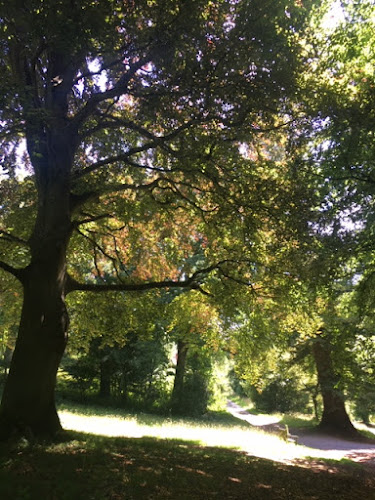It's about trees. It's a novel, but it covers some of the same ground as non-fiction books such as The Hidden Lives of Trees and Wilding (see review of the latter here): namely, recent research has shown that trees are far more conscious beings than we ever dreamed of: that they communicate; that they defend themselves, that they are hosts to vast numbers of other organisms; that even in death, if they are allowed to lie where they fall, they will host more life - not just regrowth, but quantities of animals and insects and other froms of plant life. So when you knock down an ancient woodland (supporters of HS2 please note), you are destroying a whole eco-system which has been developing for hundreds of years - and which will take hundreds of years to replicate. Planting new trees doesn't do the job, though it's better than nothing. And that's not to mention what trees do in terms of soaking up carbon dioxide.
Like Wilding, Overstory makes you adjust the way you see life on our planet and our place within that incredibly complex network of systems. For so long, we have seen ourselves as separate and superior to nature. We've plundered the earth for what we want, and while we didn't want too much, that was okay. But now, we want more and more, and we take more and more, and the planet can't cope. We have to see and understand this if we want life to continue to exist on our beautiful, once-in-a-universe planet - or at least, if we want human life to continue. We are part of nature; we aren't separate. If we destroy forests, we destroy our own future.
 |
| Trees at Tyntesfield, in Somerset, UK |
So how do you tell that story in a novel? Well, this is how Richard Powers does it. The book is set in America. It features nine individuals, beginning with a fairly brief history of each of their lives. (The book is very long, so he has plenty of time.) He is very good at this. Each character is very real, very complex; each is smart in different ways. So for instance, the first story concerns a family descended from a Norwegian immigrant who moves out west, bringing with him some seeds from an American chestnut tree. Most of them don't survive, but one does, and grows into a vast and beautiful specimen which exercises a strange fascination over the Hoel family. Partly this is because a disease has killed off most of these trees: the Hoel tree has so far survived because it is so far west - but the disease spreads inexorably, as these diseases do.
Each year one Hoel after another takes a photograph of the tree. Eventually, the last descendant, Nick, creates art installations around the tree, and becomes more and more passionate about trees. Eventually, he meets up with the other eight, who by very different paths have also become desperately concerned about the way big business is destroying woodlands that existed long before white people colonised America: in the end, they take drastic measures which have a huge effect on all of their lives.
I can't pretend I understood everything in the book. In particular, there is a character called Neelay who creates virtual reality games. I have never played computer games, so I don't understand the simplest things about them - and this story line becomes very complex indeed.
But even so, I found it absolutely compelling. Here is a sample of the writing. The character is Patricia Westerford, a scientist and academic who lives in a hut in a forest.
The trees are busy tonight, fixing carbon in their dark phase. All will be in flower before long: huckleberry and currant, showy milkweed, tall Oregon grape, yarrow and checkermallow. She marvels again at how the planet's supreme intelligence could discover calculus and the universal laws of gravitation before anyone knew what a flower was for.
The book is an astonishing achievement. Heart-breaking and inspirational in equal measure.

